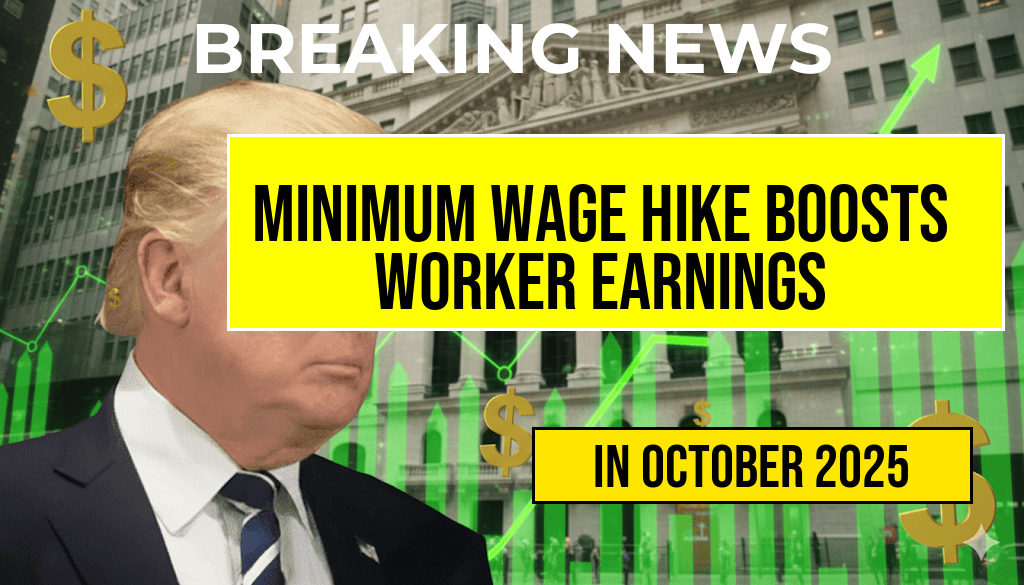The proposed increase of the federal minimum wage to $15 an hour is poised to significantly impact millions of workers across the United States. Estimates suggest that this change could elevate annual earnings by approximately $3,300 for an estimated 32 million employees currently earning at or near the federal minimum. This adjustment aims not only to address wage stagnation but also to reduce income disparities among low-wage earners. As policymakers debate the potential economic ripple effects, labor advocates emphasize enhanced financial stability for workers, while critics raise concerns over possible employment effects and increased business costs.
Understanding the Scope of the Wage Increase
The federal minimum wage, last increased in 2009 to its current rate of $7.25 an hour, has remained static for over a decade amid rising living costs. The proposed hike to $15 is part of broader legislative discussions aimed at establishing a more livable wage, especially in urban centers where housing and daily expenses have surged.
According to analysis from the U.S. Bureau of Labor Statistics, approximately 32 million workers—roughly one-fifth of the nation’s hourly employees—currently earn wages at or below the proposed new minimum. For these workers, the wage increase could translate into an additional $3,300 annually in earnings, assuming full-time employment at 40 hours per week throughout the year.
Projected Economic Impact on Workers
| Employment Category | Number of Workers (millions) | Average Additional Annual Earnings |
|---|---|---|
| Workers earning $7.25–$15 per hour | 32 | $3,300 |
| Potential total increase in earnings | – | $105 billion |
Labor economists highlight that this increase could significantly improve financial stability for low-income households, potentially reducing reliance on public assistance programs and enhancing consumer spending. Economic Policy Institute estimates suggest that such a wage boost could lift roughly 17 million workers out of poverty, provided the wage hike is implemented without substantial job losses.
Potential Benefits and Challenges for Employers
Advantages of the Wage Increase
- Enhanced worker morale and productivity: Higher wages can improve employee satisfaction and reduce turnover rates.
- Reduced wage inequality: Bringing wages closer to a living wage diminishes the gap between low- and higher-income workers.
- Increased consumer spending: With more disposable income, workers are likely to spend more, boosting local economies.
Concerns from Business Perspectives
- Rising labor costs: Small businesses and employers in low-margin industries may face increased expenses, potentially leading to layoffs or automation.
- Potential employment effects: Some studies warn that substantial wage hikes could result in reduced hiring or increased unemployment among the least skilled workers.
- Inflationary pressures: Higher wages could contribute to increased prices for goods and services, impacting consumers beyond wage earners.
Legislative Status and Broader Context
The push for a $15 minimum wage has gained momentum through various state and local initiatives, with several jurisdictions already implementing higher minimum wages. The federal proposal aims to standardize wages nationwide, addressing disparities across regions. However, opposition from business groups and some political figures remains vocal, citing concerns over economic competitiveness and job creation.
The Biden administration has expressed support for the wage increase, emphasizing its role in promoting economic justice and reducing poverty. As the legislative process unfolds, stakeholders are closely monitoring potential compromises and phased implementation strategies to balance economic growth with wage fairness.
Additional Considerations and Next Steps
Experts suggest that the success of the wage hike will depend on complementary policies, such as targeted tax credits or support for small businesses. Additionally, ongoing research into employment effects will be crucial in assessing the long-term impact of the increase.
For workers and advocates, the proposed minimum wage increase represents a significant step toward addressing income inequality. Policymakers, meanwhile, face the challenge of crafting legislation that maximizes benefits while mitigating potential downsides. As discussions continue, the nation watches closely how this fundamental shift in wage policy will reshape the economic landscape for millions of Americans.
Frequently Asked Questions
What is the proposed federal minimum wage increase?
The proposed federal minimum wage is set to increase to $15 an hour, aiming to improve earning prospects for millions of workers across the country.
How many workers are expected to benefit from the wage increase?
Approximately thirty-two million workers are anticipated to see a boost in their annual earnings as a result of the new minimum wage policy.
What is the estimated increase in annual earnings due to the wage hike?
The wage increase is expected to raise annual earnings by about $3,300 for each affected worker, significantly improving their financial stability.
When is the proposed minimum wage increase expected to take effect?
The timeline for the implementation of the $15 minimum wage varies, but discussions suggest it could be phased in over the coming years, depending on legislative approval.
What impact could the minimum wage increase have on the economy?
The increase is projected to boost consumer spending and support economic growth, while also helping to reduce income inequality among low-wage workers.

Leave a Reply